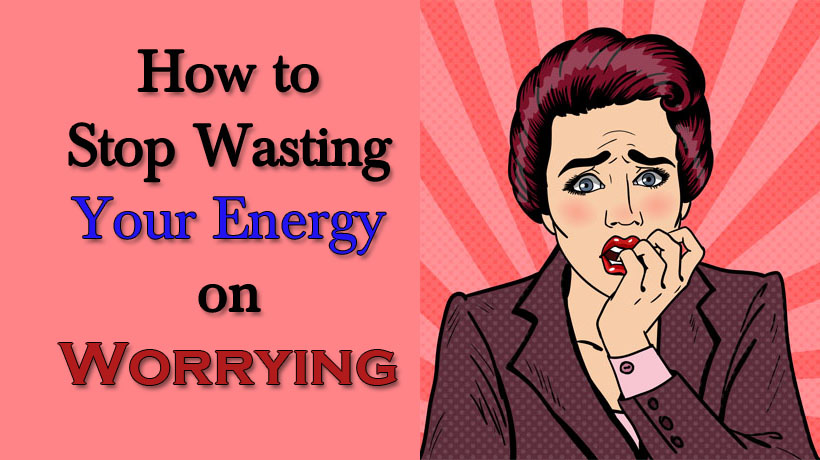Worrying is healthy and can be helpful when it spurs you to act and solve a problem. However, if you’re preoccupied with “what ifs” and worst-case scenarios, chronic worry can become anxiety. However, it is possible to train your brain to work more productively with emotions and develop mental habits that keep you on your game. Here are five simple steps you can take that will stop your worries in their tracks!
These steps are based on the TENOR Method, developed by Charles Jones, a coach from the Institute of Adaptive Mastery. It’s an effective way to think about how to use your emotions as guides to reveal your needs, improve performance, manage stress, and gain insight into yourself. TENOR is a five-step method that corrects the root causes of stress, reactivity, powerlessness, and disengagement. TENOR is an acronym that stands for each step.
1) Release Tension:
When we feel stress, we often feel it in our bodies first. It can be in the form of a headache, clenched jaw, neck and shoulder tension, backache or stomach discomfort. Mindfulness practices that include focus into these tense places in our body can help us notice how we are feeling. Try breathing into each area of your body where you feel the tension and then release your breath slowly or tense the muscle and then release it. When you pay attention to your stress levels, you start to notice what is arising from any current distress, and it raises your vitality.
2) Name Emotions:
As you recognize what you are feeling, give each one a name. For example, are you feeling fear, anger, resentment, frustration, or anxiety? Sometimes you will notice more than one emotion is at play. The actual cause of personal stress is a lack of alignment between your conscious and subconscious mind. When you worry excessively, it can seem like negative thoughts are running through your head on endless repeat. You may feel like you’re spiraling out of control, going crazy, or about to burn out under the weight of your anxiety. Like magic, when you give the emotion a name, it calms down any reactivity from your anxious feelings, such as pacing, sending emails, and catastrophizing, and you can reclaim your composure.
3) Own your Needs:
Each emotion is connected to a specific need. For example, you’ll realize that the reason you are frustrated is NOT that your coworker is being uncooperative but because you are no longer on track to achieve a goal. Or that the reason you’re anxious is not that something bad might happen but because you’re not on track to mitigate risk. Articulating the need behind your painful emotion shifts you out of blaming life and into taking responsibility for your part.
Owning your needs reduces negativity. You won’t blame others or the situation for your feelings. Instead, you’ll see these as triggers of your needs. Now you can ask yourself “what if…” questions and call up all the worst-case scenarios knowing you make the decision to mitigate risks. Ask yourself what you are afraid will happen: Are you predicting a catastrophic outcome? Do you doubt your ability to cope with disappointment? Usually, the worst-case scenario isn’t as tragic as you might envision. When you own your needs, you are accountable and in charge of your reactions.
4) Generate Options:
You always have options. You can decide not to act on your reactions to anxiety or worries. You can choose to look at alternative perspectives, to eliminate unhealthy coping skills like complaining to others or drinking too much. Determine what you can control for each “what if” or other threats. When you find yourself worrying, take a minute to examine the things you have control over. You can’t prevent a storm from coming, but you can prepare for it. You can’t control how someone else behaves, but you can control how you react.
Recognize that, sometimes, all you can control is your effort and your attitude. Sometimes people tell themselves, “I can’t allow my business to fail,” and they don’t take the time to ask themselves, “What would I do if my business failed?” Asking yourself some provocative questions, and acknowledging that you can handle the worst-case scenario, can help you put your energy into more productive exercises. When you put your energy into the things you can control, you’ll be much more effective. Giving yourself options will raise your resourcefulness.
5) Gut-check Resolutions:
Our subconscious mind has a much faster processing capability than our conscious mind (processing implications hundreds of thousands of times faster). Once you’ve arrived at an option for addressing the need behind your painful emotion, your subconscious mind will begin calculating the likely impacts of pursuing this option. Take time to reflect before acting by noticing if your subconscious has identified an implementation hurdle or unintended consequence. Are you having some doubts? Perhaps you shouldn’t send that text or cancel the meeting. Use your natural intuition to confirm or reexamine your options. Otherwise, you may find yourself overpowering a hesitation, rationalizing away a hunch, and going against your gut, leading to self-sabotage. Checking things out this way ensures a satisfying choice and elevates your enthusiasm for action.
Sources:
https://static1.squarespace.com/static/55332169e4b03d5a7f748562/t/563d8712e4b0b3f3797c8eb7/1446872850135/FiveDecisionsthatLoweryourEmotionalIntelligence.pdf
http://adaptivemastery.com/method/
https://www.helpguide.org/articles/anxiety/how-to-stop-worrying.htm



